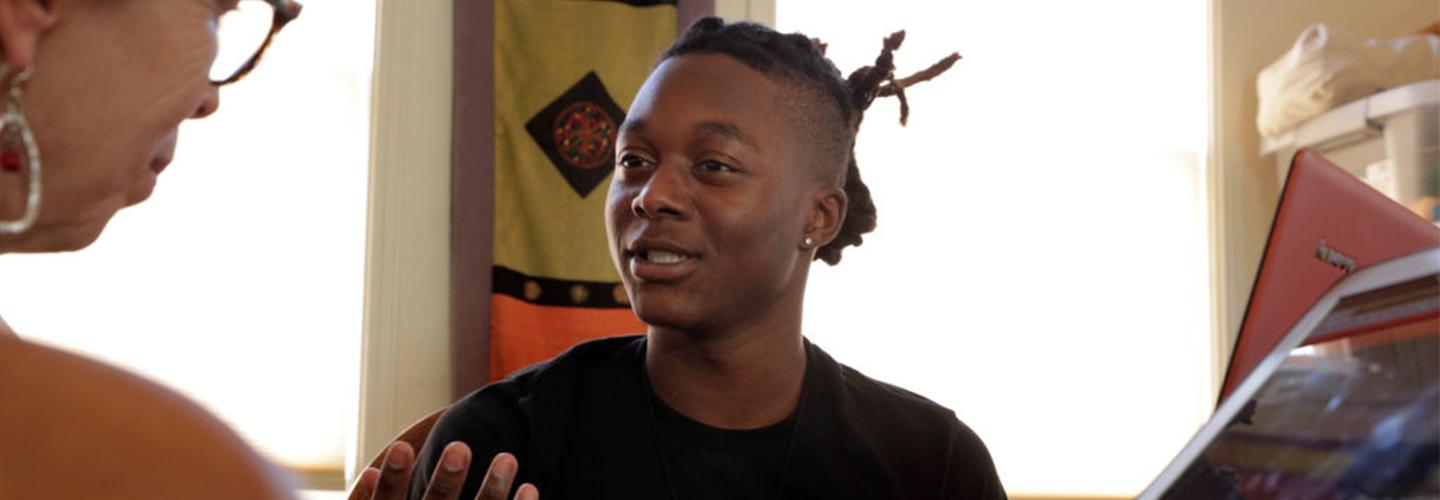
Transforming Youth Justice Systems to Eliminate Disparities and Better Support Young People
2024 marks the 50th anniversary of the Juvenile Justice and Delinquency Prevention Act (JJDPA), the nation’s most significant federal policy for improving juvenile justice systems. The milestone arrives at a time when state and local reforms are threatened by polarized politics and media narratives regarding youth crime, and by persistent racial and ethnic disparities amplified during the COVID pandemic.
To commemorate the occasion, Child Trends and the Coalition for Juvenile Justice hosted a webinar featuring distinguished youth justice transformation leaders discussing the contributions of the JJDPA and offering their thoughts on the most pressing challenges ahead. The panel acknowledged important progress under the JJDPA’s core requirements to protect youth involved in the justice system, but recognized the need for further reforms to create youth justice systems that are equitable, fair, just, and help young people thrive. To help federal lawmakers and the juvenile justice field understand the 50-year arc of the JJDPA—due for reauthorization as of 2024—this blog offers four key takeaways from our commemorative event.
The JJDPA is an effective lever for maintaining an evidence-informed youth justice system.
Panelist Shay Bilchik, a former administrator for the Office of Juvenile Justice and Delinquency Prevention, noted that the field operates in a more evidence-based manner than in decades past as a result of the JJDPA, and applies research findings from federal investments in landmark longitudinal studies on the causes and correlates of delinquency. From its inception in 1974 and through subsequent reauthorizations, the JJDPA has been a means for updating state and federal policy to reflect the continuously evolving knowledge and evidence bases on child and adolescent development and on which juvenile justice practices are effective, ineffective, or even harmful. Research on adolescent brain development, trauma, positive youth development, and the ineffectiveness and negative impact of punitive measures has served as a powerful motivator to acknowledge and minimize the harms of system involvement. JJDPA codifies youth’s unique developmental needs in federal policy and establishes minimum standards for state and local youth justice systems, including important safeguards against collateral consequences of system involvement. Regular reauthorization updates these standards and protects progress made against the pendulum of political whim and often inaccurate media narratives about youth crime.1
State Advisory Groups must prioritize eliminating continued racial and ethnic disparities and must receive adequate funding.
While the JJDPA’s achievements and its role in driving federal-state partnerships for youth justice reform are noteworthy, persistent racial and ethnic disparities have come to define youth justice systems throughout the country.2 State Juvenile Justice Advisory Groups must use their Title II plans as a policy tool to eliminate these disparities. Jill Ward, a decades-long advocate and former Maine State Advisory Group chair, described the urgent need for State Advisory Groups to develop meaningful strategies and to have racial and ethnic disparities prioritized in every aspect of their plans, rather than as an add-on or standalone priority. Although the most recent reauthorization (2018) of the JJDPA established new requirements for states to address racial and ethnic disparities, Congress simultaneously reduced funding by more than 30 percent3 and disparities increased during the pandemic. It is imperative that Congress adequately fund the work of State Advisory Groups to address this longstanding problem.
Judges and prosecutors must play a more central role in eliminating disparities.
Judges and prosecutors have both the responsibility and the opportunity to influence other actors in the system, including their professional peers, and to approach their work with intentionality to eliminate disparities. Two panelists—Judge Romona Gonzalez, former president of the National Council of Juvenile and Family Court Judges; and Ramsey County (MN) prosecutor John Choi—described the unique role of judges and prosecutors in transforming youth justice systems. They also highlighted the need to continuously train and educate system professionals, especially judges and prosecutors, to understand the long history of reform and not regress by trying to look “tough on crime” with policies and practices that have previously been found to be ineffective or harmful.
Youth justice reform requires empowering communities and those with lived experience.
State officials and advocates must work collaboratively across systems to empower and support youth and families with lived experience to lead system transformation efforts. Transformation must go beyond law enforcement and court actions to address the developmental and resource needs of youth and families and must shift the power balance and solutions away from the formal system and toward communities, families, and those with lived experience—particularly in the communities most impacted by crime. Michelle Diaz, former Coalition for Juvenile Justice national chair and advocate for youth voice, urged that officials and advocates not simply voice support for those principles; instead, they should meaningfully build community and individual skills and capacities for leading reform through coaching, mentoring, training, and support.
Child Trends will continue to support discussions, reflections, and action planning on juvenile justice transformation as state and local system leaders and advocates work not only to maintain the important protections and safeguards achieved through the JJDPA—but also to transform youth justice systems to become more effective, efficient, fair, equitable, and supportive of the conditions that help youth thrive.
Related Research
- Reducing Adverse Police Contact Would Heal Wounds for Children and Their Communities
- Integrating Positive Youth Development and Racial Equity, Inclusion, and Belonging Approaches Across the Child Welfare and Justice Systems
- Black Children and Youth Can Benefit From Focused Research on Protective Community Resources
- Healthy Schools Can Create More Racially Equitable Communities
- Six Strategies to Design Equitable Child Support Systems
Footnotes
Suggested citation
Bumbarger, B.K., & Harper, K. (2024). Transforming youth justice systems to eliminate disparities and better support young people. Child Trends. DOI: 10.56417/5034i8367g
© Copyright 2024 ChildTrendsPrivacy Statement
Newsletter SignupLinkedInThreadsYouTube
